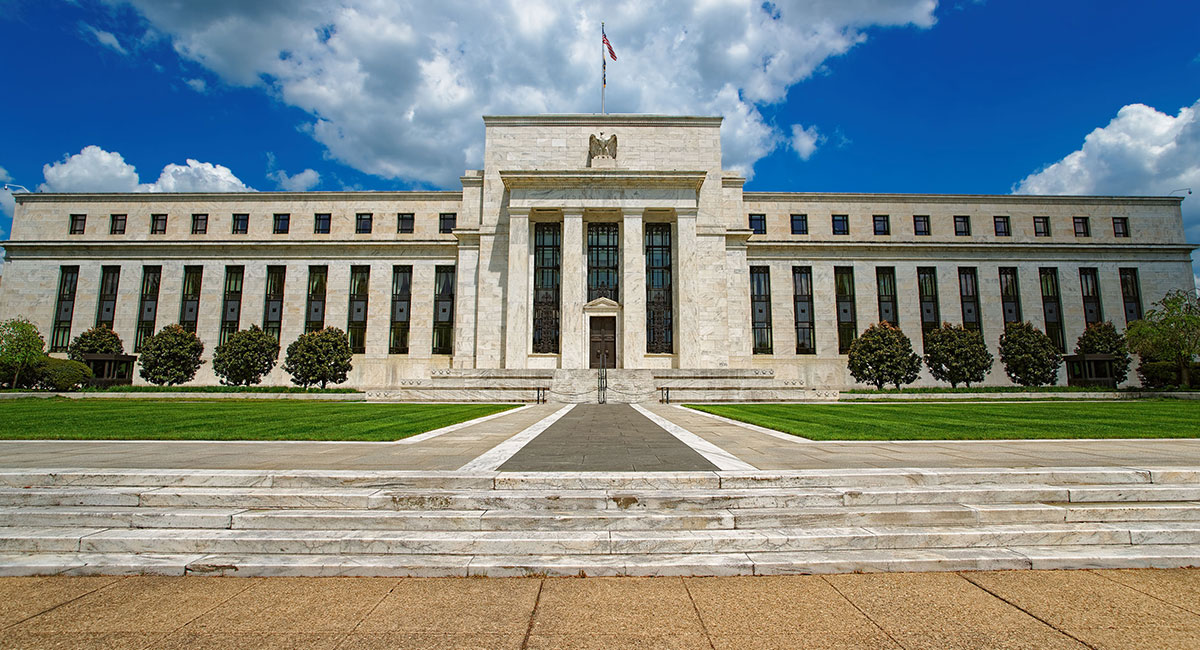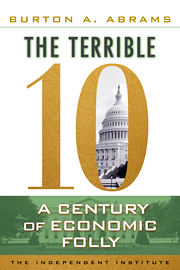A massive bank failure has occurred, yet no headlines have been posted in the news or social media. This bank has lost close to a trillion dollars on its investments. Yet it continues to operate as if nothing happened. Such an enormous loss should have sent Congress clamoring for more regulatory agencies and demanding greater oversight. But all’s quiet on the banking front.
The massive bank’s loss occurred because the bank made enormous purchases of long-term government bonds and mortgage-backed securities when interest rates were low. But long-term rates have since risen substantially, and now the bank is holding assets that have fallen dramatically in market value.
The Financial Accounting Standards Board’s FAS 115 “requires that all banks report certain portions of their investment portfolios at market value.” The purpose of this ruling is to provide greater transparency of the risk that banks are taking with their investments. If a bank were to buy long-term assets when interest rates were low and then interest rates increased, the market value of a bank’s assets would drop, raising its risk of failure. Such was the fate of another failure, the Silicon Valley Bank.
The bank discussed here purchased around $4 trillion in these long-term assets between February 2020 and June 2022. How big is its investment loss? The exact loss is difficult to assess, but I estimate it at approximately 20-25 percent—a reasonable guess given the rise in long-term interest rates and the fall in the prices of long-term bonds and mortgage-backed securities.
The bank suffering these massive losses isn’t above the law. It is just special in the eyes of the law. It is the Federal Reserve Bank (the Fed), entrusted by the government with special banking powers to achieve “price stability and maximum employment.” While special in law, it is not exempt from the laws of supply and demand. It can create money and never go bankrupt (what’s a creation of the federal government has access to funds that non-government entities lack), it can suffer massive investment losses, which the taxpayers will soon discover.
The Federal Reserve traditionally has been a cash cow for the Treasury. The Fed annually transfers all net profits to the Treasury (running about $100 billion annually in recent years). But because of the Fed’s low-interest-rate investments and the high interest rate it now pays banks on their reserves (currently 5.5 percent on $3.2 trillion dollars), the milk flow is over. The Fed will be sending no “profits” to the Treasury. Rather, it will be reporting losses, which it plans to deduct from any future transfers. Expect the Treasury’s annual deficit to be $100 billion higher without the Fed’s usual gift.
The Fed did its massive long-term-asset acquisition under its money-creating Quantitative Easing (QE) program. QE artificially lowered long-term interest rates much to the delight of homeowners who refinanced their properties, owners of equities and real estate who saw a boom in prices, and other borrowers who were able to get funds at favorable rates. But there ain’t no such thing as a free lunch. The Fed made massive purchases of assets in the name of the public, so taxpayers were the unwitting investors making bad investments in low-interest long-term bonds and mortgages. Since QE pumped substantial amounts of new money into the economy, it helped trigger the current inflation, though some would point out that QE was rolled out years ago without inflation. And in Japan, myriad QEs took place amid a rising yen.
In attempting to fight inflation that some would ascribe to bitter fruits of global lockdown that eviscerated globalized, price-shrinking cooperation, the Fed has been raising short-term interest rates and selling off some of its long-term assets in a reverse QE called quantitative tightening (QT). Evidence from the last eight months indicates the Fed may have paused QT. Undoing QE—even pausing QE—is proving to be obviously costly. Thirty-year mortgage rates have already soared to 7 percent.
In defense of QE, Fed economists have pointed out that the lowered long-term interest rates allowed the Treasury to finance its deficits at lower cost to taxpayers. True, but the artificially low rates have distorted investment decisions and surely have imposed welfare costs. Regardless, the Fed, entrusted to protect price stability, has failed miserably in its mission.
The Fed’s unusual monetary policy has complicated implications, many not obvious. Questions remain. What were the costs and benefits from QE? Who were the major winners and losers? Did the Fed overstep its mandate by buying mortgage-backed securities? How much have taxpayers lost on the QE portfolio? Should QE be removed from the Fed’s monetary policy tools? Is paying interest to banks for holding reserves (now about $176 billion a year) a desirable policy? In order to develop sensible policies going forward, we need answers to these questions.









